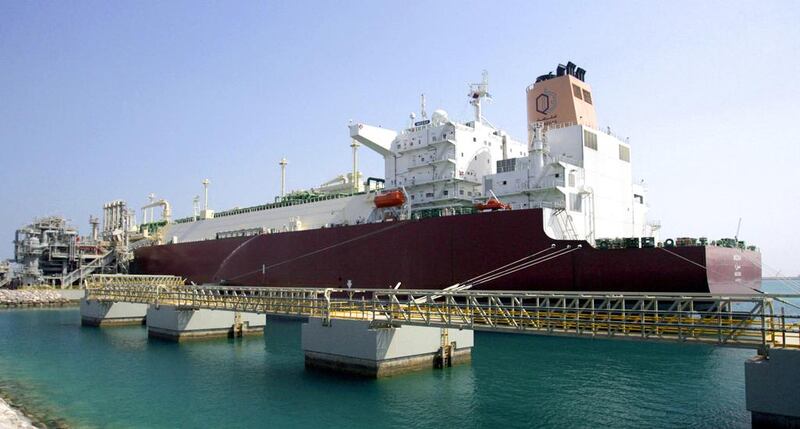Qatar's trade surplus fell last month, largely because of tumbling oil and gas prices.
It dipped 1.4 per cent from June to 14.3 billion Qatari riyals (Dh14.4bn) and plunged 55.6 per cent from July last year, according to a government report released on Saturday.
Qatar’s exports are mainly liquefied natural gas and other hydrocarbon commodities, the prices of which have fallen sharply since last year.
Last month, the country’s total exports were down 41 per cent to 23.5bn riyals compared with July last year, while the value of oil and gas exports declined to 15.6bn riyals. At the same time, the value of Qatar’s imports rose 13.5 per cent to 9.2bn riyals last month.
Qatar’s main trading partners are Japan and South Korea, which buy most of its oil and gas exports and supply the largest share of its imports. Cars and other motor vehicles are Qatar’s single biggest import category by value.
According to the Japan External Trade Organisation (Jetro) yesterday, the value of Japan’s crude oil imports from the UAE fell 44 per cent in the first half of the year to about US$9.2bn.
Japan is also one of the largest trading partners of the UAE, which supplies more than 26 per cent of Japan’s crude oil need. The UAE is Japan’s fifth-largest supplier of petroleum gases, the value of which tumbled about 46 per cent to just more than $2bn in the first half of the year.
Qatar is Japan’s largest supplier of petroleum gases, with a market share of nearly 20 per cent, compared with 7 per cent share for the UAE, according to Jetro.
The market for liquefied natural gas, Qatar’s dominant export, is under pressure, especially in Asia after new major LNG projects have come on-stream in Australia and Papua New Guinea in the past year.
But despite the fall in oil and gas prices and the increased competition for market share, Qatar continues to run a strong – although much reduced – trade surplus and its finances are in good shape to weather the market downturn. On Saturday, the credit ratings agency Fitch reaffirmed Qatar's AA rating and its outlook as "stable".
It cited Qatar’s “very strong net external sovereign assets and current efforts to address the impact of lower oil prices on the fiscal balance”.
Fitch estimates that with 90 per cent of Qatar’s fiscal revenue coming from oil and gas, its revenues this year will drop 29 per cent, assuming average North Sea Brent crude prices of $65 a barrel.
But as with other oil-exporting states in the region, Fitch expects Qatar to run small budget deficits over the next couple of years after making spending cuts and even without relying on funds from its sovereign wealth funds.
amcauley@thenational.ae
Follow The National's Business section on Twitter





